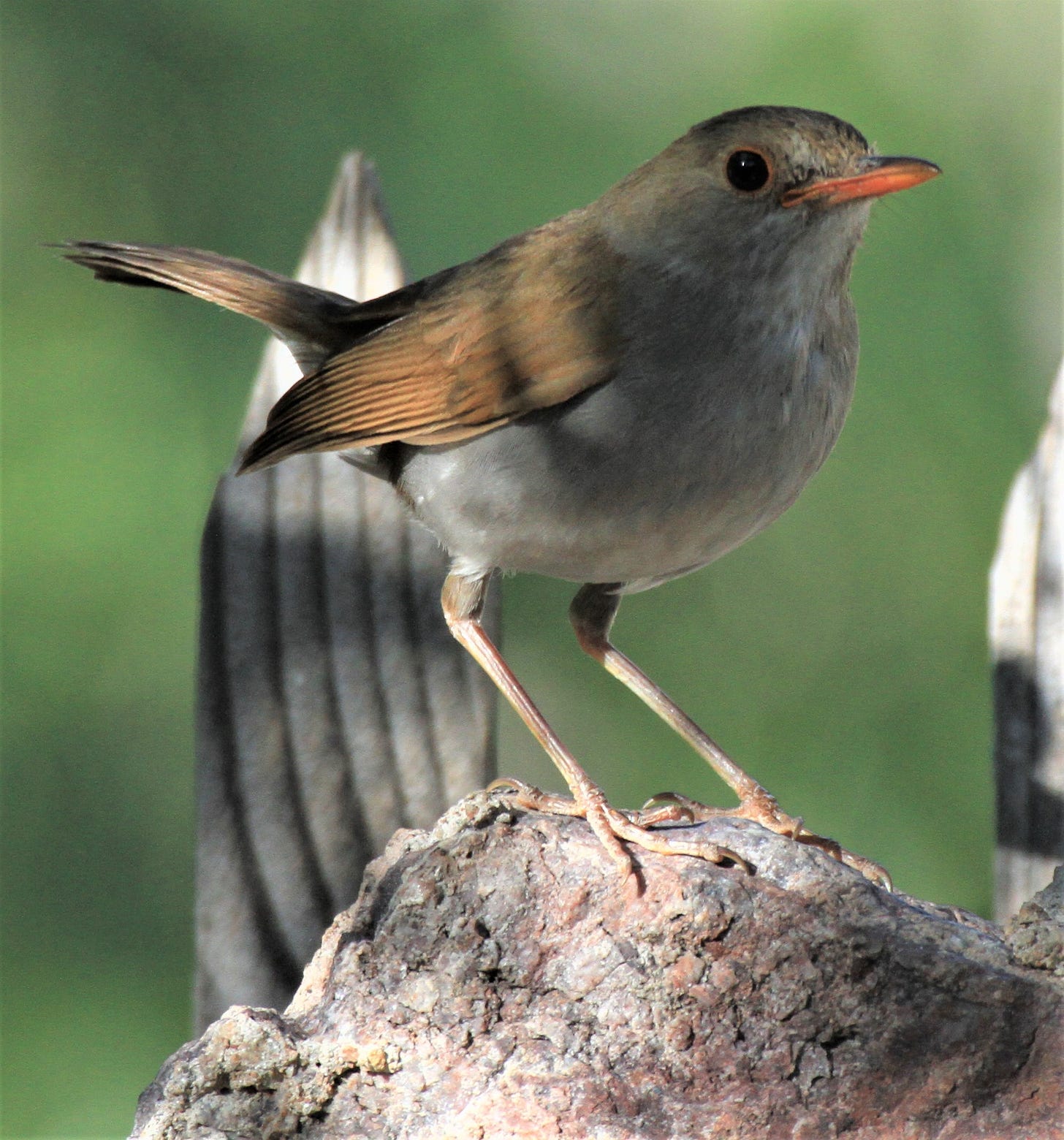
June 15, 2022
5:30 am. A cool 60 degrees F. this morning but the heat is on with the blazing sunrise. Typical June. Hot, dry, and stupefying. I’ve just returned from a long weekend in Mountainaire near Flagstaff, visiting the kids and grandkids and finishing up a remodeling project. Four days away from the yard and I’m eager to check out the new arrivals, if any. One thing I’ve discovered about this yard—you never know.
In two hours, I have a list of 33 “usual suspects.” One wild turkey gobbler eyeing me for sunflower seeds. Bronzed and brown-headed cowbirds strutting for the opposite sex. Flycatchers at the nest box, wrens probing tree bark, orioles like Mexican borrachitos candy. Noisy mockingbirds and phainopeplas make nuisances of themselves, darting into the flowering elderberry and pulling my attention away from the fountain.
And then, movement in the apple tree. Russet back and tail—hermit thrush? Not likely this late in June, and I haven’t seen a Swainson’s thrush since early May. But definitely a thrush...except when it turns toward me its breast shows no spots. I grab my camera and take a few photos. Russet and gray. Weird. Like no thrush I’ve ever seen.
As the bird skulks through the apple tree, I follow it with my camera. It flies above the fountain to the dead branch in the chokecherry and faces me. More photos. Long legs and short tail. The bill is orange. The eye ring is orange. I still see “thrush,” but the orange confuses me. The bird winds its way through the branches and thick leaves and across the rocks to the fountain’s pool and dips its bill into the water. Lots more photos. Then it flies to the top of the fountain and drinks from the trickling spout.
I have no idea what it is—except “thrush”—but I’m certain I’ve never seen it before. Not in the yard. Not on the planet.
I show the wife my photos on the camera, and we flip through my Sibley’s Guide. She stops at a page of thrushes and points to a gray-breasted bird with an orange bill. “Looks like this one.”
“It does.”
“But they’re not in Arizona.”
“No.”
“Are you going to report it?”
“Um...yes...?”
“Better alert the neighbors. And put on some real clothes.”
The messages and texts start pouring in after I post to eBird the orange-billed nightingale-thrush and six photos. “Sweet baby Jesus,” one writes. “Holy suffering catfish,” another says. “Definitely a solid contender for the #2 position on the list of Best-AZ-Yardbirds-of-All-Time.” People congratulate me, ask to visit, say they’re on their way from Tucson, from the Mojave Desert. From Wisconsin. From Maine. Others warn me to prepare for the hoards and to “put up velvet ropes now.”
The first knock at my door comes within the hour. In two hours, 25 people—many of them megabirders I only know from social media—are sitting quietly in the backyard. I round up more chairs.
This evening, the bird hasn’t returned. But it matters not to the hardcore birders in the yard. Hope isn’t the thing with feathers. It’s the thing with binoculars perched on my chairs. Especially if it means the possibility of glimpsing a first state record (fourth in the US) orange-billed nightingale-thrush.
Tomorrow, at 5am, I won’t be watching for the bird. I’ll be watching the birdwatchers.
Not sure how I’ll follow this one! But thanks for subscribing! More to come, I’m sure!



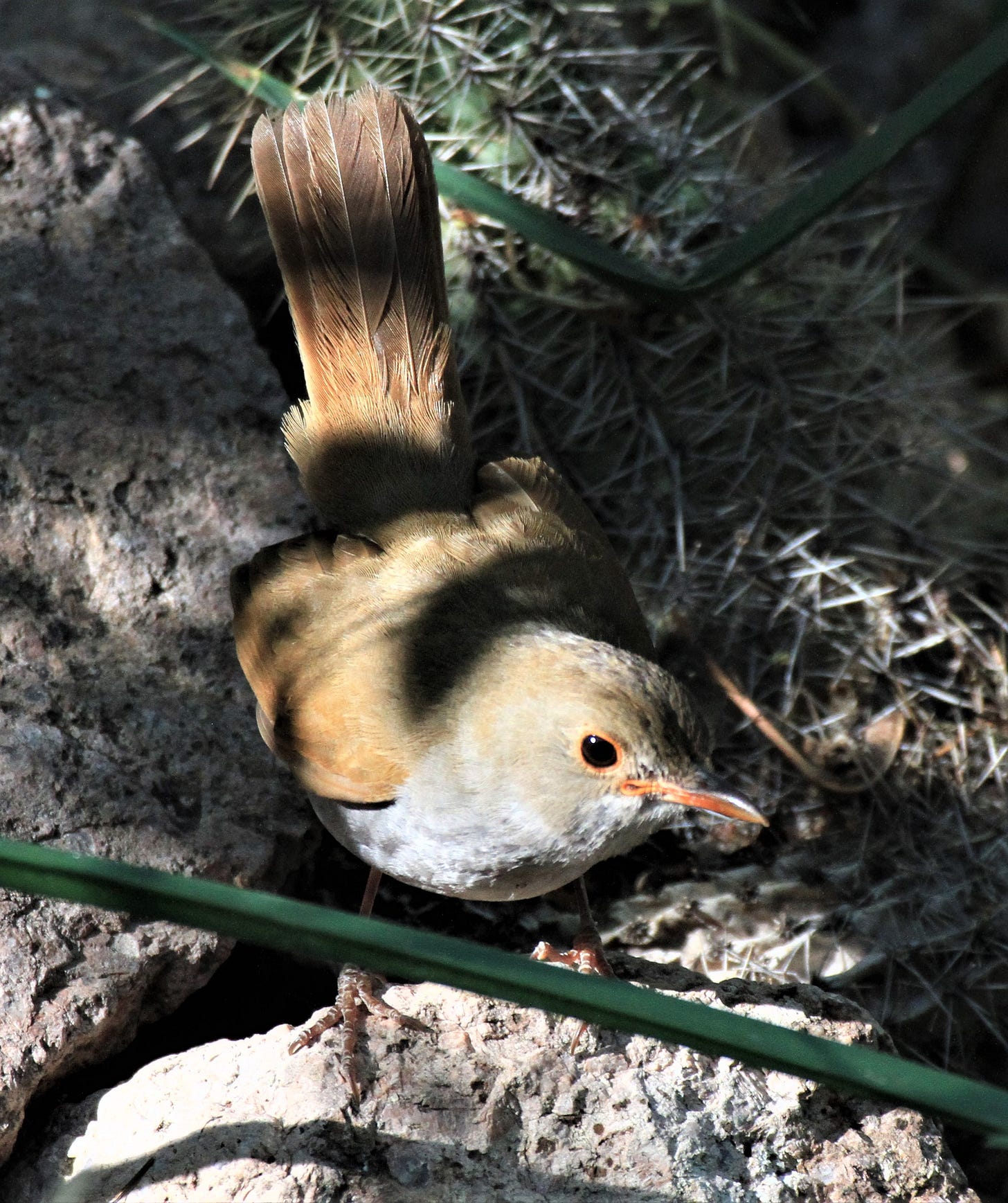
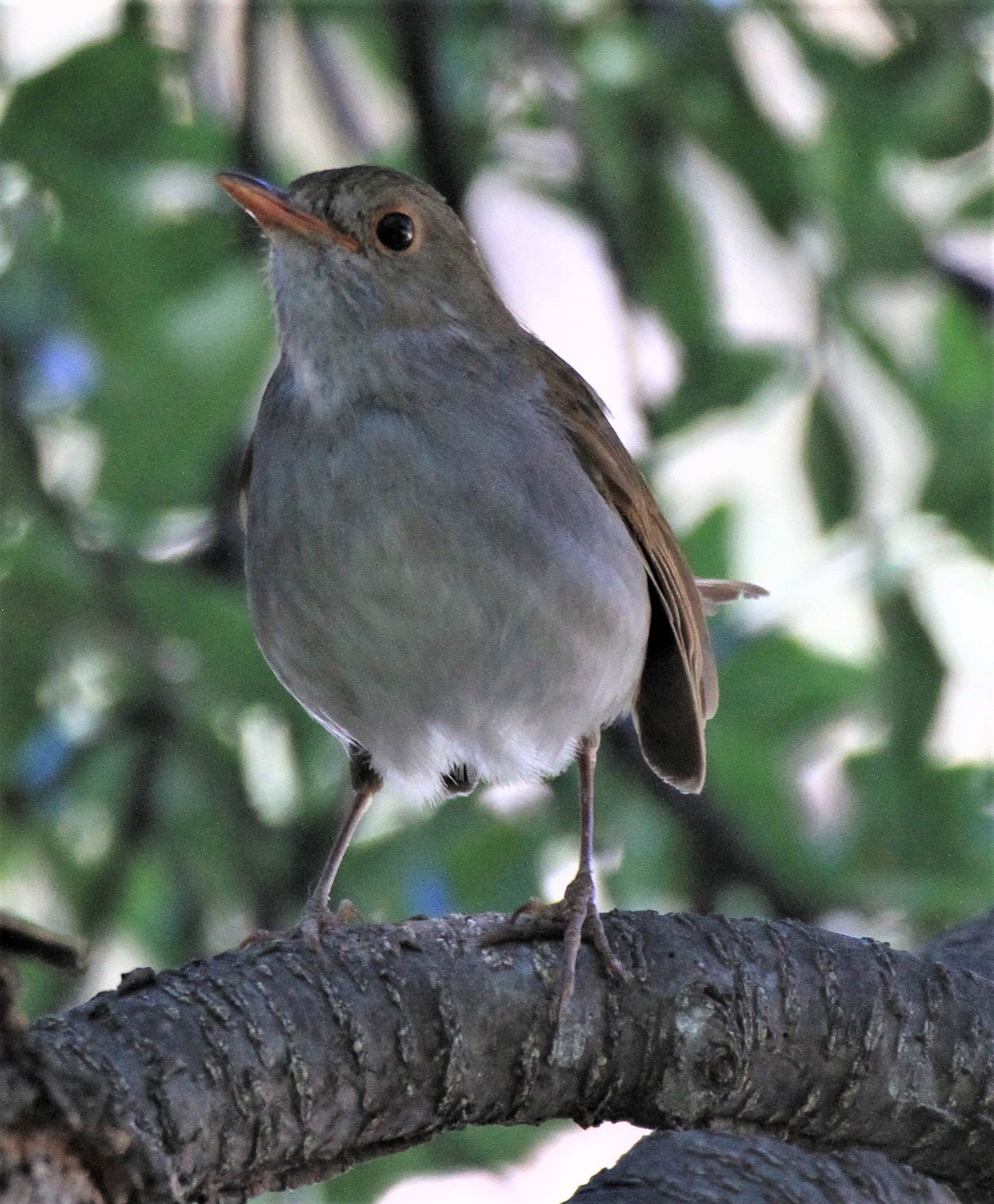
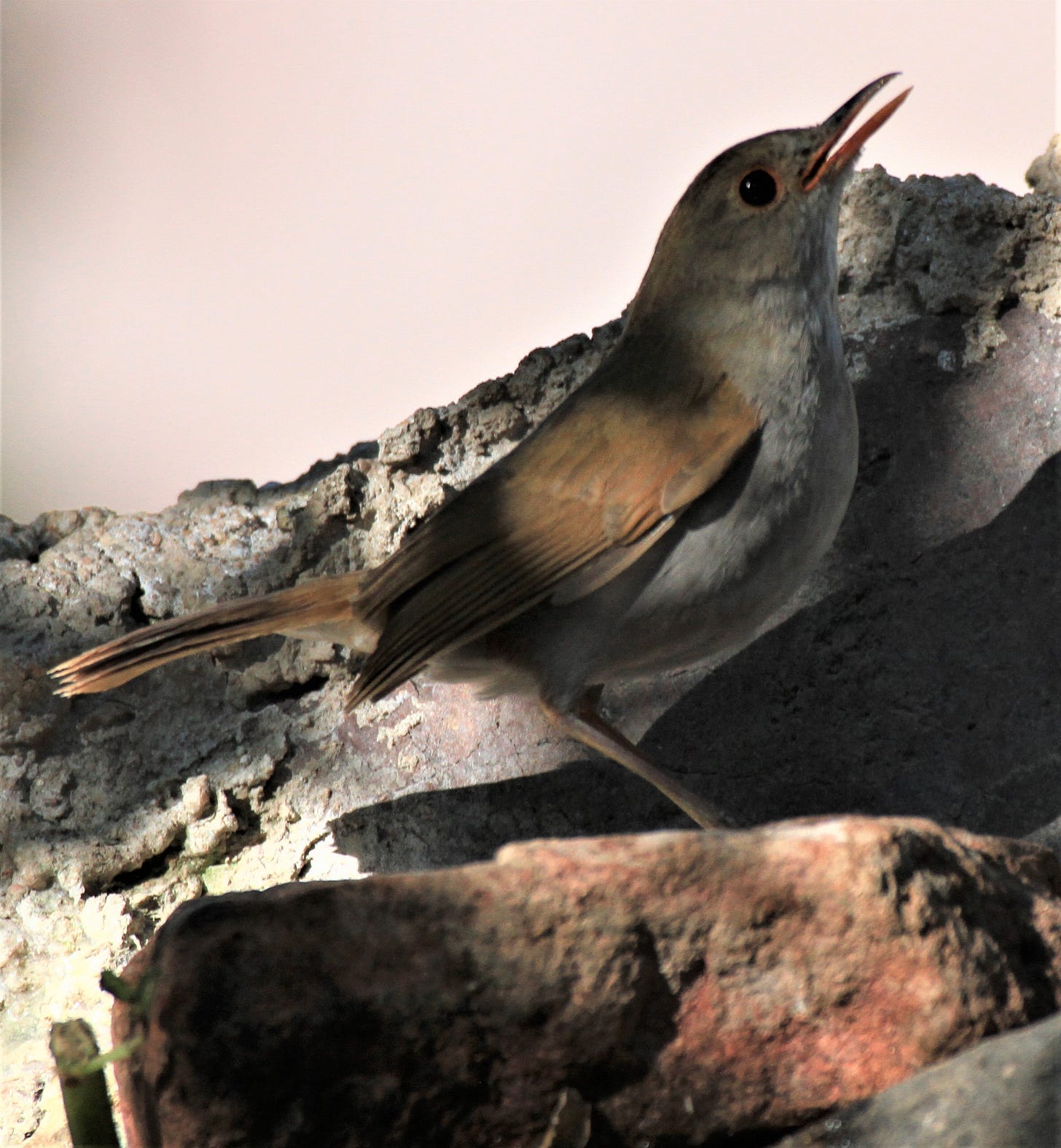
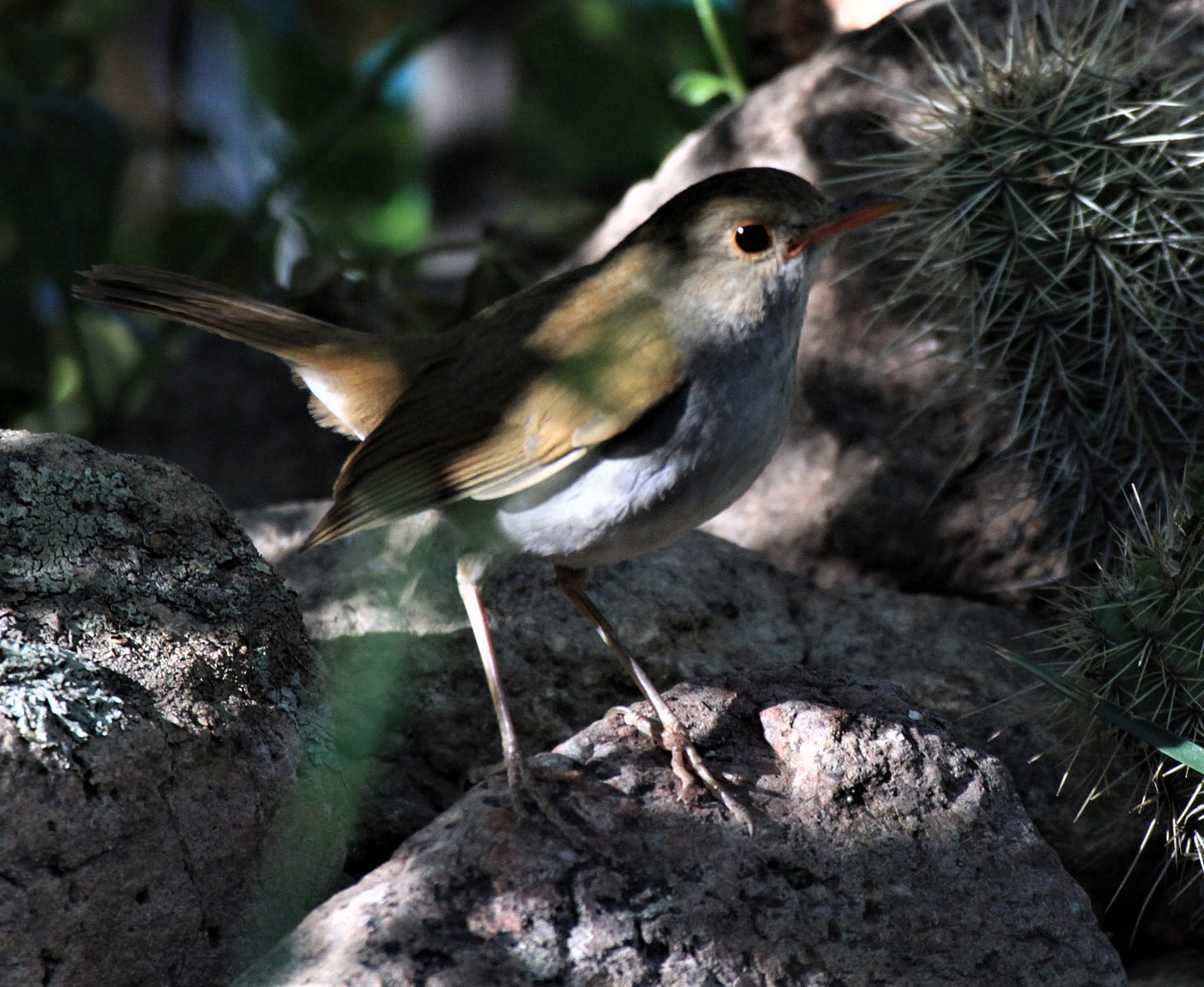
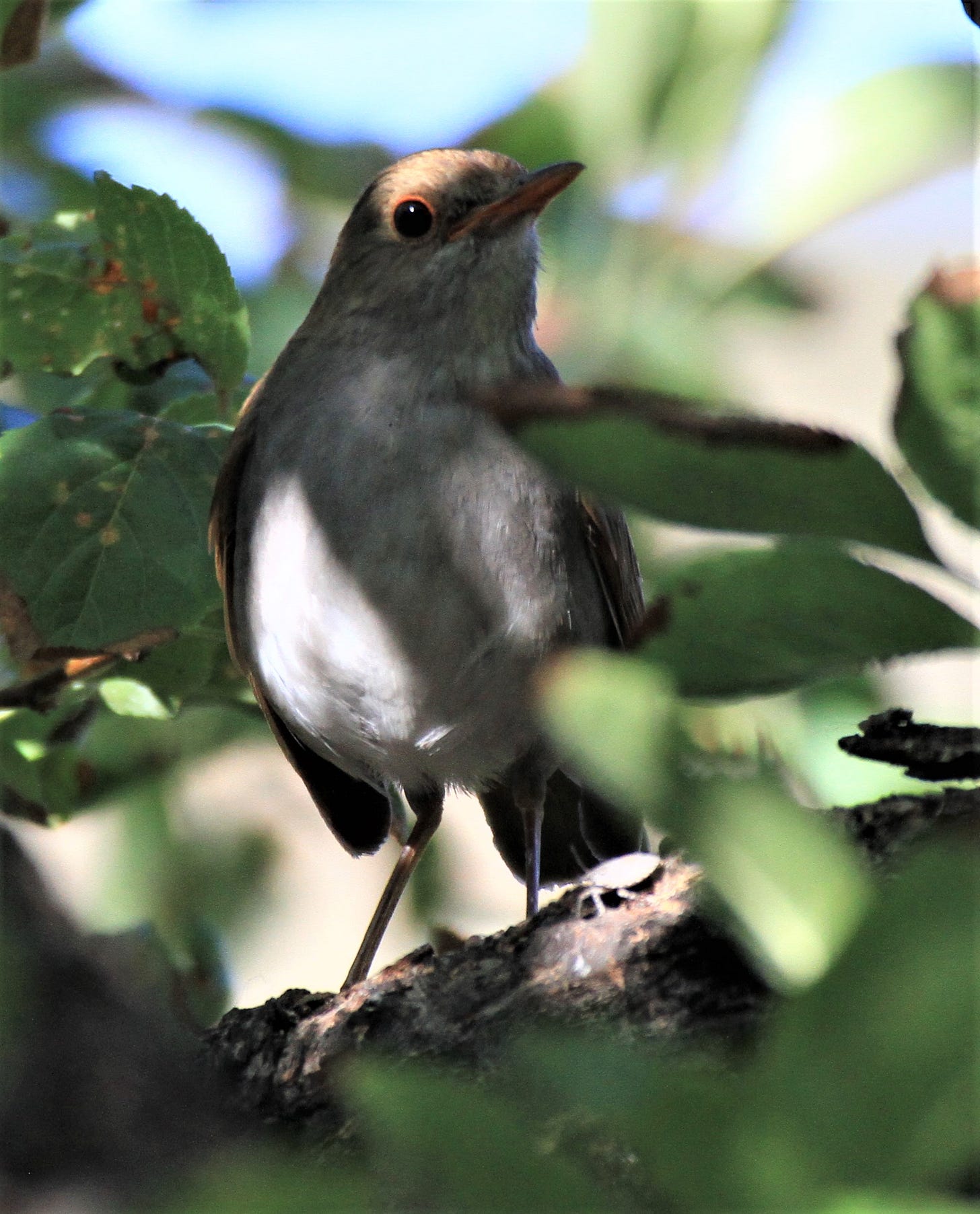
You got the bird of the decade (or even longer)!! How I wish it had stayed around for just one more day. Bet you're glad you got back to Bisbee when you did!
Ride that Mule (mountain) Ken!